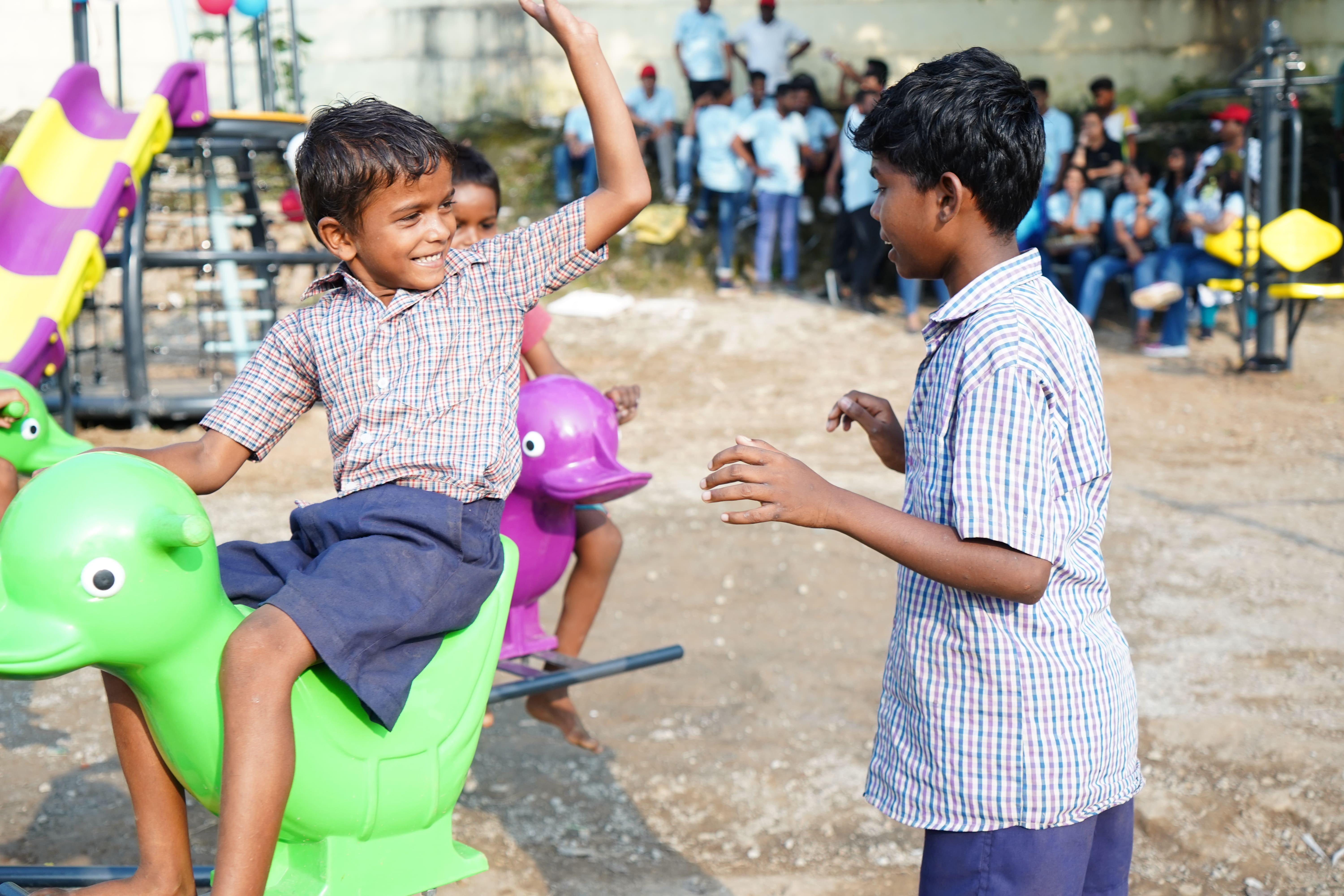Play is a crucial part of a child’s development. It helps them grow
physically, mentally, and socially, and it can even help shape their
emotional well-being. In India, however, many children, especially
those in urban areas and rural communities, lack access to safe and
well-maintained playgrounds. This issue needs urgent attention.
So, how can we ensure that all children in India, no matter
where they live, have access to play?
The State of Playgrounds in India
-
Urban Overcrowding: In rapidly growing cities,
open spaces are being taken over by buildings, roads, and
infrastructure. Playground areas are often replaced with more
construction projects, leaving very little space for children to
play.
-
Rural Challenges: In rural India, access to
playgrounds can be even more limited. Many children have no
playgrounds nearby and are often forced to play in dangerous or
unsuitable spaces, such as busy roads or agricultural fields.
-
Poor Maintenance: Even when playgrounds exist,
they are often poorly maintained. Broken equipment, lack of safety
measures, and unclean environments can make playgrounds unsafe for
children.
-
Exclusivity: Playgrounds may be inaccessible to
certain groups of children, such as children with disabilities. In
many cases, the design of playgrounds does not take into account
the needs of all children, making it harder for children with
physical limitations to enjoy them.

Why Playgrounds Are Important
-
Physical Health: Play helps children develop
stronger muscles, improve coordination, and increase overall
fitness.
-
Social Skills: Playgrounds are where children
learn to share, cooperate, and interact with others. These social
interactions teach important life skills such as teamwork and
conflict resolution.
-
Mental Health: Play boosts creativity,
problem-solving skills, and emotional intelligence. It also
provides children with an outlet to express themselves and manage
stress.
-
Safety: Safe, well-maintained playgrounds give
children a secure place to play away from hazards like traffic or
dangerous areas.
In short, play is a vital part of childhood. Every child, regardless
of where they live or their background, should have the opportunity
to experience it.
What Can Be Done to Ensure Access to Playgrounds?
-
Increase Playground Availability in Urban Areas:
In fast-growing cities, urban planning should prioritize creating
green spaces and playgrounds. Instead of focusing solely on
buildings and roads, planners should ensure that adequate space is
dedicated to children’s parks, sports facilities, and other
recreational areas. These spaces can be built on rooftops in
densely populated areas or in underutilized land to make the most
of available space.
-
Promote Inclusive Design: Playgrounds should be
designed with all children in mind. This includes ensuring that
there is accessible equipment for children with disabilities, such
as wheelchair-friendly paths, sensory play areas, and special
swings. An inclusive design will give every child, regardless of
their abilities, the opportunity to play and engage with others.
-
Collaborate with Local Communities: Local
communities are often the key to ensuring playgrounds are built
and maintained. Community involvement can help in identifying the
need for playgrounds, raising funds, organizing volunteer
clean-ups, and fundraising through donations or crowdfunding. When
communities are involved, they also feel a sense of ownership and
are more likely to care for the playgrounds in their neighborhood.
-
Create Playgrounds in Rural Areas: In rural
India, there is often a lack of public infrastructure, and
playgrounds are non-existent. Local governments and NGOs can help
build community playgrounds in rural areas, especially in places
where children have little access to safe outdoor spaces. These
spaces can be simple, but they can still offer children the chance
to play freely and safely.
-
Public-Private Partnerships: Public-private
partnerships (PPP) can be an effective way to fund playground
development. Private companies can sponsor playgrounds or donate
resources, while local governments can provide the necessary land
and infrastructure. In return, companies can get exposure through
branding opportunities, such as signage on the playground
equipment.
-
Government Initiatives and Policies: Governments
at the local, state, and national levels can introduce policies
that mandate the creation of playgrounds in both urban and rural
areas. For example, they can allocate funding, offer tax
incentives to businesses that contribute, and create playgrounds
as part of public infrastructure projects. Governments can also
work closely with NGOs and civil society to ensure that
playgrounds meet the needs of the community.
A Collective Responsibility
Ensuring that all children in India have access to safe playgrounds
is a shared responsibility. While the government and NGOs can play a
big role, local communities also have a significant part to play in
the planning, construction, and maintenance of these spaces.
Together, we can create a future where every child in India has a
safe, accessible place to play, learn, and grow. Whether it’s by
advocating for better urban planning, volunteering, or fundraising,
each of us can contribute to making playgrounds accessible for all.
FAQs
Q1: Why are inclusive playgrounds important?
Inclusive playgrounds ensure that children of all abilities
can play, learn, and grow together, promoting equality and
social integration.
Q2: How can communities help maintain playgrounds?
Communities can organize regular clean-ups, report damages,
and raise funds for repairs, ensuring playgrounds remain
safe and accessible for all children.
Q3: What role do public-private partnerships play in
playground development?
Public-private partnerships can provide funding, resources,
and expertise, making it easier to build and maintain
playgrounds in both urban and rural areas.
